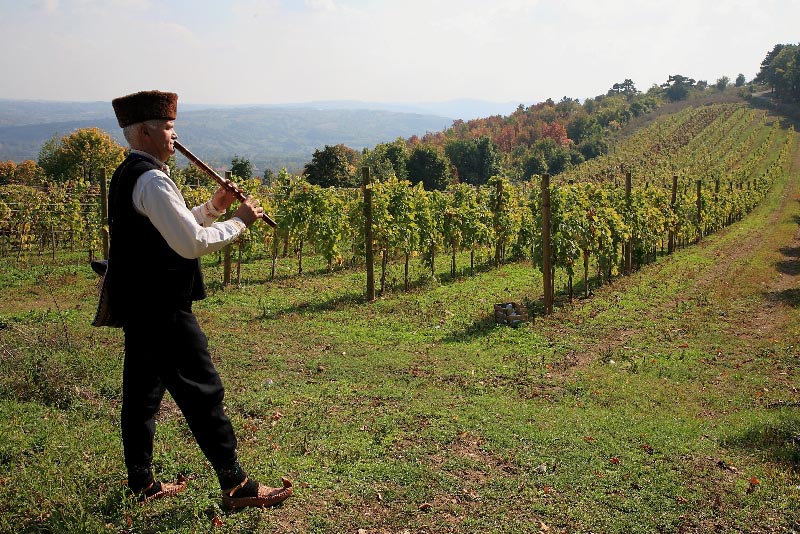

Serbian folk instruments, made of natural materials, amaze people around the world with their sounds of nostalgia and freedom
In some parts of Serbia musical instruments were produced from anything one could find in nature. People used to say that all you needed to make a good fife was “a branch cut in autumn to be dried during winter, and a sharp knife to peel the bark”.
Glue was made according to the same technology. It was made of “one egg white, three to four mashed cloves of garlic and an egg-size plum-tree resin”. After the branch was prepared, it was washed with milk and then dried during winter. Afterwards it was coated with oil and vinegar several times, and then it was put into grease of lamb roast to soak and impregnate.
These fifes, the so called “frulas”, were made around Serbia mostly by shepherds who, beside village gatherings, mostly played for themselves. The word “frula” comes from the Romanian expression “fleur”, meaning “fife”, and it was mostly made of straight branches of certain diameter, never trunks or stumps.

The name of another of the traditional musical instruments in Serbia – “gajde” (bagpipes), comes from the Arabic “gaida”, “kaida”, which means “melody”.
The accordion is one of the favorite instruments in Serbia. Since the time when it appeared during the World War I, it reached Serbia’s most remote villages, becoming more popular than many traditional musical instruments.
The “gusle” is the most popular among folk instruments. Epic poems sung by the “gusle” player are accompanied by the sound of the instrument. Like fifes, the “gusle” is made of a single piece of dried wood, mostly compressed maple or walnut tree, more rarely of oak or other kinds of wood, and they are made by the players themselves. Rarely the “gusle” can also be made of squash.
To make a good “gusle”, you need a branch from a maple tree that had grown under direct exposure to sunlight. Strings are made of 60 horsehairs from the tail or mane, mostly from a white horse, possibly a stallion, while the bow is made of thicker wood with strings containing around 40 horsehairs.
Instruments play a significant role in music tradition of Serbia and they appear in numerous shapes. Some are native, others are accepted from other countries. Ancient music instruments are completely subordinate to players.
Long time ago, anything that could make a sound with the purpose to improve communication between people and higher powers to whom a certain ritual was dedicated, was considered a musical instrument. A leaf, grass or green parts of spring onions were once used to produce music. Later on musical instruments became signaling tools, but along with human development they finally became what they really are – instruments of music, in a true sense of those words.
Traditional musical instruments in Serbia are also the “šargija” and the “tamburitza“, instruments originating from the East.
Related Articles


From Fireworks to Family Dinners: New Year’s Eve Across Serbia
December 31, 2025
Kuršumlijska Banja: Serbia’s Quiet Winter Spa Escape
December 30, 2025
Novak Đokovic Receives Special Globe Soccer Award in Dubai
December 29, 2025





